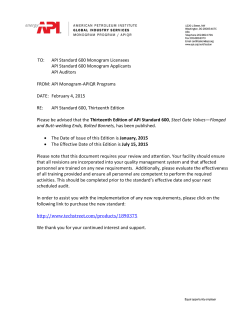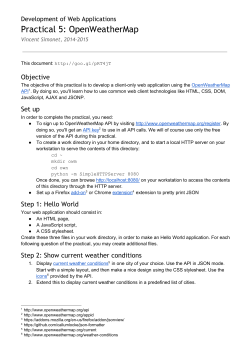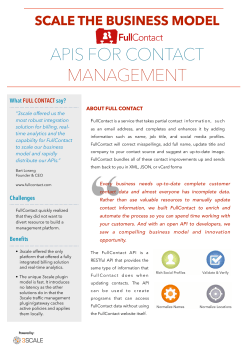
�������� 15
Урок 15
Дебагер django
Устанавливаем дебагер Django.
pip install django-debug-toolbar
INSTALLED_APPS = (
# ...
'django.contrib.staticfiles',
'debug_toolbar',
)
MIDDLEWARE_CLASSES = (
'debug_toolbar.middleware.DebugToolbarMiddleware',
)
from django.conf import settings
from django.conf.urls import include, patterns, url
if settings.DEBUG:
import debug_toolbar
urlpatterns += patterns('',
url(r'^__debug__/', include(debug_toolbar.urls)),
)
REST API на основе tastypie.
sudo pip install django-tastypie
from tastypie.utils.timezone import now
from django.contrib.auth.models import User
from django.db import models
from django.utils.text import slugify
class Entry(models.Model):
user = models.ForeignKey(User)
pub_date = models.DateTimeField(default=now)
title = models.CharField(max_length=200)
slug = models.SlugField()
body = models.TextField()
def __unicode__(self):
return self.title
def save(self, *args, **kwargs):
# For automatic slug generation.
if not self.slug:
self.slug = slugify(self.title)[:50]
return super(Entry, self).save(*args, **kwargs)
Creating Resources
# myapp/api.py
from tastypie.resources import ModelResource
from myapp.models import Entry
class EntryResource(ModelResource):
class Meta:
queryset = Entry.objects.all()
resource_name = 'entry'
Hooking Up The Resource
# urls.py
from django.conf.urls.defaults import *
from myapp.api import EntryResource
entry_resource = EntryResource()
urlpatterns = patterns('',
# The normal jazz here...
(r'^blog/', include('myapp.urls')),
(r'^api/', include(entry_resource.urls)),
)
●
http://127.0.0.1:8000/api/entry/?format=json
●
http://127.0.0.1:8000/api/entry/1/?format=json
●
http://127.0.0.1:8000/api/entry/schema/?format=json
●
http://127.0.0.1:8000/api/entry/set/1;3/?format=json
Creating More Resources
# myapp/api.py
from django.contrib.auth.models import User
from tastypie import fields
from tastypie.resources import ModelResource
from myapp.models import Entry
class UserResource(ModelResource):
class Meta:
queryset = User.objects.all()
resource_name = 'user'
class EntryResource(ModelResource):
user = fields.ForeignKey(UserResource, 'user')
class Meta:
queryset = Entry.objects.all()
resource_name = 'entry'
Adding To The Api
# urls.py
from django.conf.urls.defaults import *
from tastypie.api import Api
from myapp.api import EntryResource, UserResource
v1_api = Api(api_name='v1')
v1_api.register(UserResource())
v1_api.register(EntryResource())
urlpatterns = patterns('',
# The normal jazz here...
(r'^blog/', include('myapp.urls')),
(r'^api/', include(v1_api.urls)),
)
Настройки
from tastypie.authentication import BasicAuthentication
class SillyAuthentication(Authentication):
def is_authenticated(self, request, **kwargs):
if 'daniel' in request.user.username:
return True
return False
class UserResource(ModelResource):
class Meta:
queryset = User.objects.all()
resource_name = 'user'
excludes = ['email', 'password', 'is_active', 'is_staff', 'is_superuser']
fields = ['username', 'first_name', 'last_name', 'last_login']
allowed_methods = ['get']
authentication = BasicAuthentication()
Настройки
from tastypie.authorization import DjangoAuthorization
from tastypie.serializers import Serializer
from tastypie.throttle import BaseThrottle
from tastypie.paginator import Paginator
class UserResource(ModelResource):
class Meta:
…….
# Add it here.
authorization = DjangoAuthorization()
serializer = Serializer(formats=['json', 'jsonp', 'xml', 'yaml', 'html', 'plist'])
throttle = BaseThrottle(throttle_at=100, timeframe=2)
paginator_class = Paginator
Настройки
API_LIMIT_PER_PAGE
TASTYPIE_ALLOW_MISSING_SLASH
TASTYPIE_DATETIME_FORMATTING = 'rfc-2822'
TASTYPIE_DEFAULT_FORMATS = ['json', 'xml']
Возможности
Tastypie features support for GeoDjango! Resources return and accept GeoJSON
.
It is common to use django to provision OAuth 2.0 tokens for users and then have Tasty Pie use these tokens to
authenticate users to the API.
import requests
import json
response = requests.get('http://localhost:8000/api/v1/entry/1/')
event = json.loads(response.content)
response = requests.post('http://localhost:8000/api/v1/entry/',
data=json.dumps(event),
headers={'content-type': 'application/json'})
Приемы резнесения настроек на серверах.
_local.py -> local.py
from local import *
.gitignore
.idea
*.pyc
/media
local.py
db.sqlite3
*~
Интеграция аутентификации через соц.
сети.
Django Social Auth
pip install django-social-auth
INSTALLED_APPS = (
...
'social_auth'
)
./manage.py syncdb
Интеграция аутентификации через соц.
сети.
AUTHENTICATION_BACKENDS = (
'social_auth.backends.twitter.TwitterBackend',
'social_auth.backends.facebook.FacebookBackend',
'social_auth.backends.google.GoogleOAuthBackend',
'social_auth.backends.google.GoogleOAuth2Backend',
'social_auth.backends.google.GoogleBackend',
'social_auth.backends.yahoo.YahooBackend',
'social_auth.backends.browserid.BrowserIDBackend',
'social_auth.backends.contrib.linkedin.LinkedinBackend',
'social_auth.backends.contrib.disqus.DisqusBackend',
'social_auth.backends.contrib.livejournal.LiveJournalBackend',
'social_auth.backends.contrib.orkut.OrkutBackend',
'social_auth.backends.contrib.foursquare.FoursquareBackend',
'social_auth.backends.contrib.github.GithubBackend',
'social_auth.backends.contrib.vk.VKOAuth2Backend',
'social_auth.backends.contrib.live.LiveBackend',
'social_auth.backends.contrib.skyrock.SkyrockBackend',
'social_auth.backends.contrib.yahoo.YahooOAuthBackend',
'social_auth.backends.contrib.readability.ReadabilityBackend',
'social_auth.backends.contrib.fedora.FedoraBackend',
'social_auth.backends.OpenIDBackend',
'django.contrib.auth.backends.ModelBackend',
)
urlpatterns = patterns('',
...
url(r'', include('social_auth.urls')),
...
)
TWITTER_CONSUMER_KEY
= ''
TWITTER_CONSUMER_SECRET
= ''
FACEBOOK_APP_ID
= ''
……..
SKYROCK_CONSUMER_SECRET
= ''
YAHOO_CONSUMER_KEY
= ''
YAHOO_CONSUMER_SECRET
= ''
READABILITY_CONSUMER_SECRET
= ''
READABILITY_CONSUMER_SECRET
= ''
Интеграция аутентификации через соц.
сети.
LOGIN_URL
= '/login-form/'
LOGIN_REDIRECT_URL = '/logged-in/'
LOGIN_ERROR_URL
= '/login-error/'
SOCIAL_AUTH_LOGIN_REDIRECT_URL = '/another-login-url/'
SOCIAL_AUTH_NEW_USER_REDIRECT_URL = '/new-users-redirect-url/
SOCIAL_AUTH_NEW_ASSOCIATION_REDIRECT_URL = '/new-association-redirect-url/'
SOCIAL_AUTH_DISCONNECT_REDIRECT_URL = '/account-disconnected-redirect-url/'
SOCIAL_AUTH_BACKEND_ERROR_URL = '/new-error-url/'
{% url "socialauth_begin" "backend-name" %}
{% url "socialauth_disconnect" "backend-name" %}
{% url "socialauth_disconnect_individual" "backend-name" association_id %}
© Copyright 2025










